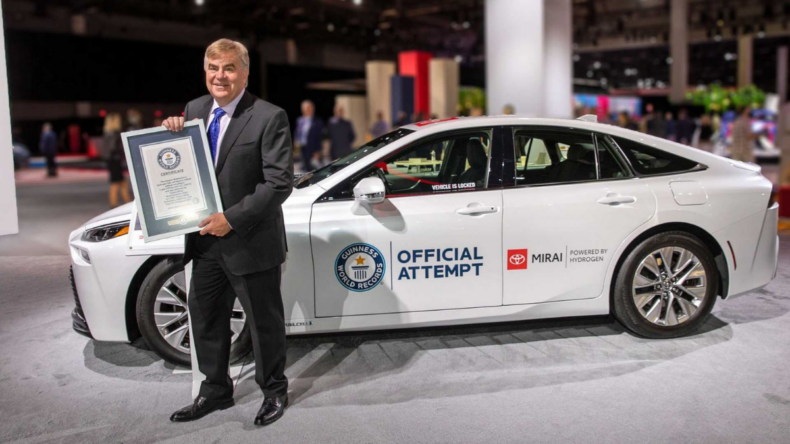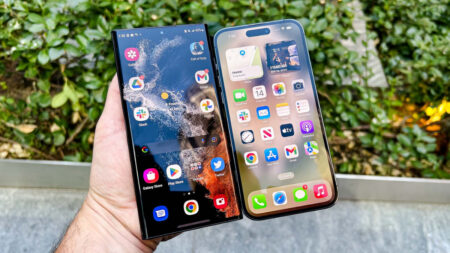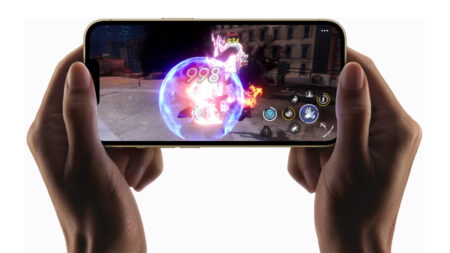Fill the tank once and run 1360 km with that fuel. It may sound strange to hear. But it is true. That’s why Guinness world record pollution-free car from Toyota achieved this. Now that you know what the vehicle is, Mirai completed a 1360-kilometre round trip on a single refueling in Southern California, USA.
Don’t get me wrong, this vehicle runs on petrol or diesel, but the hydrogen fuel cell electric vehicle put on a fantastic performance. The journey began five minutes after refueling and sealing the vehicle’s fuel tank. Professional hypermiler Wayne Gerdes and co-driver Bob Winger tested Toyota Mirai’s fuel cell model.
Testing Start For Toyota Mirai
The two-day test run began on August 23 at the Gardena Technical Center in California, home to Toyota’s Fuel Cell Development Group. On the first day, they completed 761 km of highways, and we travelled 600 km on village roads and busy roads on the second day, and Toyota said it completed 1360 km in two days. Because of this it came in limelight and Called it Guinness world record pollution-free car from Toyota.
5.65 kg of hydrogen was used in this journey to test the fuel efficiency of the vehicle. Toyota stated that there had been no carbon emissions in such a long journey. 152 MPGE Only water emitted as emissions, reported that a car running on conventional fuels emits 300 kilograms of carbon by travelling so many kilometers. There were 12 hydrogen filling stations on this route.
Toyota Proud For New Model With Guinness World Record
Toyota Mirai was the first hydrogen fuel cell vehicle to go on sale in North America, launched in 2016. The manufacturers are very proud that the new generation model has broken the Guinness Book of World Records. Bob Carter, head of Toyota Motor North America, commented. Mirai is the latest impetus for Toyota’s drive to become a pollution-free and eco-friendly brand. Toyota Motor Corporation claims that a new history has been born in the fuel efficiency of pollution-free vehicles. The company says it has not adopted any driving tactics that would not be possible under normal circumstances.
Toyota Mirai In Glimpse Of Automotive Movement
Toyota Motor Corp wants to restart in December the production curtailed by component shortages with a rebound in shipments due to worldwide pandemic and that may help it claw back around a third of output lost to supply disruptions, three sources familiar with the carmaker’s plans
Last month, Toyota cut its production target for the financial year to end-March by 300,000 vehicles to 9 million units because rising COVID-19 infections slowed work at parts factories in Malaysia and Vietnam.
Toyota, which had hardened its supply chain against disruptions after the 2011 earthquake that devastated Japan’s northeast coast, was the last major automaker to revise production plans because of parts shortages. The pandemic forced component factories to close while also driving up demand for semiconductors that carmakers needed as people moved to stay home bought tablets and other electronic devices.
With too few parts, automakers have been unable to take advantage of a rebound in demand for cars in key markets such as China. Vehicle sales there in September dipped by a fifth from a year earlier.
Read Story:- TATA Steel Introduces Carbon Capture And Utilization Plant













